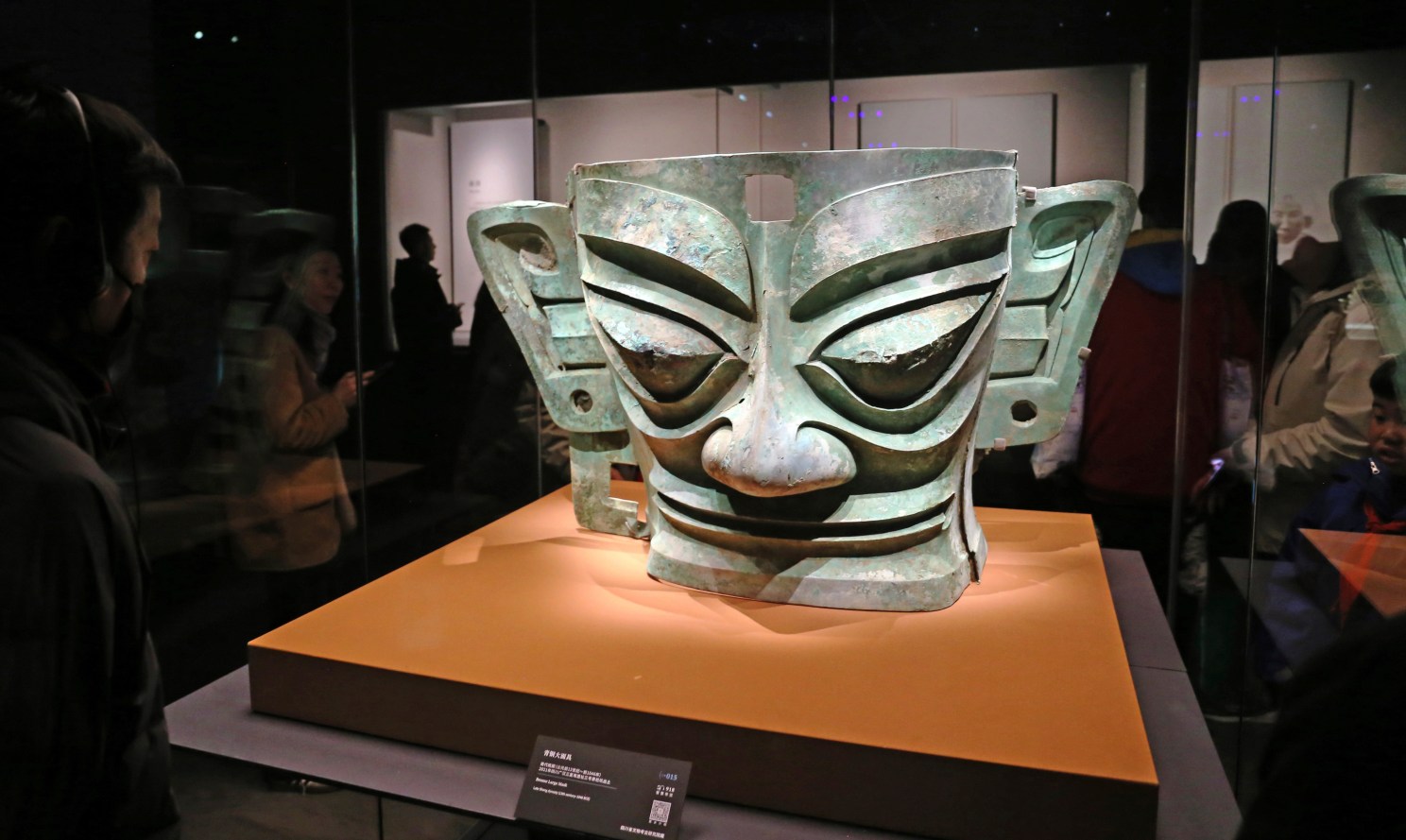Study quantifies U.S. news media’s disregard for archaeology from China, Taiwan

Archaeological discoveries from Sanxingdui were featured at a museum in Shanghai last year.
Feature China via AP Images
Four years ago, Rowan Flad, the John E. Hudson Professor of Archaeology, wrote a piece for the Washington Post calling attention to the lavish media attention given to ancient Egyptian finds versus the utter silence surrounding equally spectacular discoveries in China.
“At the time I was teaching a world archaeology class at Caltech,” remembered Bridget Alex, Ph.D. ’16, now a lecturer in Human Evolutionary Biology at Harvard. “I saw Rowan’s op-ed and thought, ‘This is an interesting anecdotal example. Let’s use data to go out and test it.’”
A new analysis, published this month in Science Advances, supports Flad’s claims of an anti-China bias. The study looked at 1,155 archaeology publications in seven peer-reviewed academic journals over six years, from the beginning of 2015 to the end of 2020. It also reviewed the resulting coverage in 15 major U.S. news outlets, including CNN, Scientific American, The New York Times, and The Washington Post.
Results show that research generated on Israel/Palestine, United Kingdom, and Australia was about three times more likely to receive coverage than similar work from China and Taiwan, even when controlling for other factors found to drive coverage.
Digging into archaeology stories produced by individual news outlets revealed additional disparities. “Some media outlets just really like covering Egypt,” observed Jenny Ji, who served as the study’s co-lead author with Alex. “Others really like Spain, or really like Turkey. Once you break down the data a little further, all these interesting little nuances start emerging.”
For the 16 countries with the highest counts of archaeology research papers, the team used statistical models to test whether each was more or less likely than the others to receive U.S. media attention. “Basically nothing stood out except for the results for China and Taiwan,” Alex explained. “These two countries had the highest absolute number of journal articles, but our models show they were statistically less likely to receive coverage.”
Flad’s 2021 essay was compelled by a specific event: the lack of U.S. media interest in a set of breakthroughs at Sanxingdui, an ancient city and vast ceremonial complex located in southwest China.
“The finds include whole tusks of Asian elephants — evidence of tribute brought to the Sanxingdui leaders from across the Sichuan region — and anthropomorphic bronze sculptures distinct from other contemporary East Asian bronzes,” wrote Flad, who also co-authored the new analysis.
Ji, who is Chinese American, remembers her family engaging with news and other online information about the 3,000-year-old site. “It was all over my parents’ YouTube,” recalled Ji, a Ph.D. candidate in bioengineering at Stanford University and Alex’s former student at Caltech. “We ended up watching a livestream while archaeologists were excavating the site. But then there wasn’t a single peep about it in the U.S. news.”
Alex, Ji, and Flad identified additional factors that effectively drive U.S. news coverage of archaeology research, including publishing in a prestigious journal such as Nature or even just posting a press release to the highly trafficked EurekAlert! service for science news. Also popular with the mainstream media are studies on human origins and Paleolithic archaeology. The co-authors worked with a dataset provided by Altmetric, a commercial service that gauges online activity surrounding research outputs.
None of these other findings surprised Alex, who is also an editor at New York-based SAPIENS magazine. What got her attention was the extent of disregard for archaeological developments in China and Taiwan. “People reading about archaeology in newspapers and magazines could have the impression that certain cultures achieved great things in the past — and others didn’t,” she warned. “That’s why we feel this kind of coverage is so important.
“I would just encourage everyone involved in this pathway — whether you’re a researcher, a science journalist, or a reader,” she continued, “to try accessing stories about a more diverse past. You will be delighted by all the wonderful, fascinating things people have done all over the planet from the dawn of our species.”





